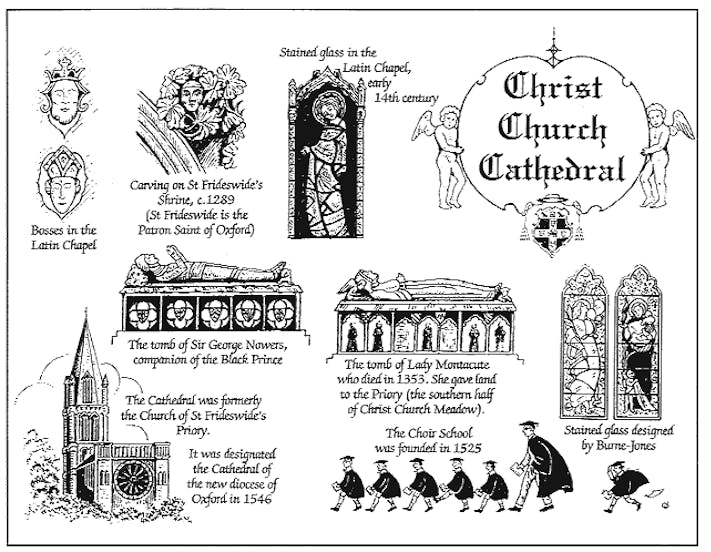Christ Church Cathedral

Tourists are often denigrated for having difficulty in locating 'the University'. The unobtrusiveness of Oxford's cathedral must also pose a problem for many visitors. Though it is the smallest cathedral in England, it serves the largest diocese.
It stands on the site of St Frideswide's Saxon church, which was burnt down, together with the abbey, in 1002. The church was rebuilt in the twelfth century. When Cardinal Wolsey came to found his new 'Cardinal' college in 1522, he demolished the west end to make room for his builders, and used the rest as a temporary college chapel. He planned a magnificent replacement, but before it was built he fell out of favour, and in 1546 the king took over the chapel to be the cathedral church of his newly created diocese of Oxford. The building still fulfils both functions.
Services take place in 'Cathedral Time', ie, that kept by Tom Tower, across the quad. This is 5 minutes behind Greenwich Mean time. Tom Tower is named after its bell Great Tom, the subject of a round Great Tom is Cast:
Great Tom is cast
And Christ Church bells ring one, two, three, four, five, six
And Tom comes last.
In addition, the cathedral is a popular venue for concerts. Organisers have to try to time the interval so that performers are not competing with the 101 strokes tolled by Great Tom at 9:05 every evening. These commemorate Henry VIII's foundation of 100 students, plus one added by a 17th century bequest.



